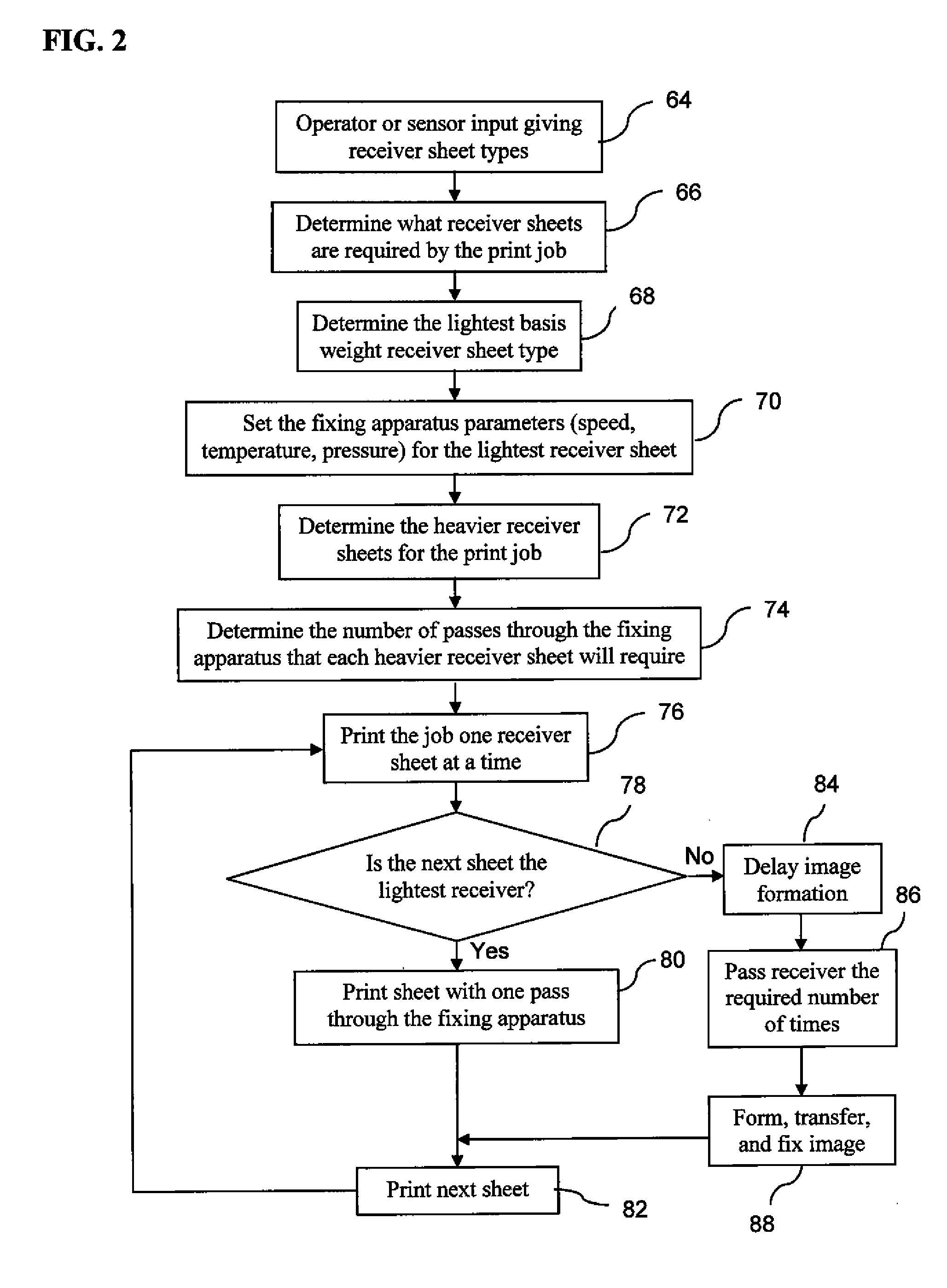Providing desired gloss to mixed media sheets
a technology of mixed media and desired gloss, applied in the direction of instruments, electrographic process equipment, optics, etc., can solve the problems of inconvenient or uneconomical use of these methods, inability to design imaging systems that can operate at multiples, and inability to achieve desired gloss. achieve the effect of productivity loss
- Summary
- Abstract
- Description
- Claims
- Application Information
AI Technical Summary
Benefits of technology
Problems solved by technology
Method used
Image
Examples
Embodiment Construction
[0019]The response of a receiver sheet during the second pass through a fixing apparatus is different than during the first pass because the nature of the receiver sheet has been changed by the first pass. First, the receiver sheet will begin the second pass through the fixing apparatus at a higher temperature than the first pass because of the heat that was delivered to the sheet during the first pass. Second, if the receiver sheet is made of a hygroscopic material such as paper, the first pass through the fixing apparatus will drive moisture out of the receiver sheet so that on the second pass through the fixing apparatus, the heat capacity of the sheet will be less because of the reduced moisture content. For both reasons fixing the image on the second pass through the fixing apparatus will require less heat than did the fixing of the image on the first pass through the fixing apparatus. For high quality images, particularly photo-quality images, it is undesirable to pass the pri...
PUM
 Login to View More
Login to View More Abstract
Description
Claims
Application Information
 Login to View More
Login to View More - R&D
- Intellectual Property
- Life Sciences
- Materials
- Tech Scout
- Unparalleled Data Quality
- Higher Quality Content
- 60% Fewer Hallucinations
Browse by: Latest US Patents, China's latest patents, Technical Efficacy Thesaurus, Application Domain, Technology Topic, Popular Technical Reports.
© 2025 PatSnap. All rights reserved.Legal|Privacy policy|Modern Slavery Act Transparency Statement|Sitemap|About US| Contact US: help@patsnap.com



